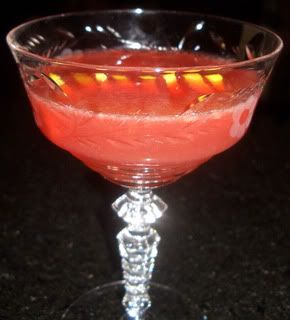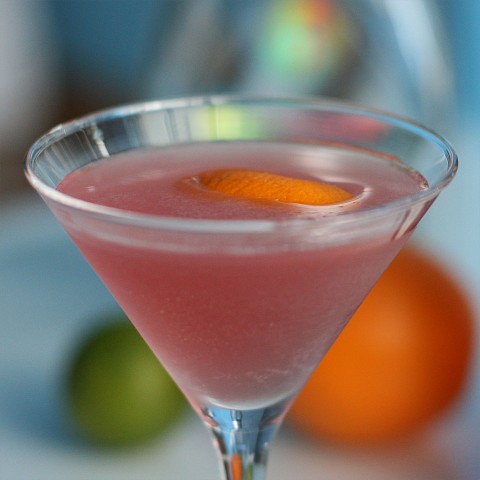
So I was given a rad gift by my co-worker who recently took a trip to the Netherlands.
Flanders, which since its partition has straddled both Belgium and the Netherlands, is the home of jenever (genever in Holland, genèbre in Belgium and genever in the UK; traditionally also called Schiedam or Dutch Gin).
Genever's origins are attributed to Franciscus Sylvius, a professor of medicine at Leiden University, whose distillation of the spirit was first recorded in 1572. However, some publications mention de Boe, another 17th-century professor at Leiden, as inventor of the 'eau de vie de genivre'. During the 14th century, when the Black Death reigned in Europe, monks discovered that the juniper berry was effective against kidney and bladder diseases, and that it might cure prostate problems and strengthen the immune system. Based on these records, Sylvius produced an inexpensive medicine by distilling the juniper berries with spirits. In only three years, Sylvius' all-purpose medicinal drink became a popular social drink in Holland, so much so that French philosopher and encyclopedist Denis Diderot (171384) described the Dutch of this time as 'living alembics, distilling themselves'. Among the first distilleries founded were Bols in 1575, de Kuyper in 1675 and Wennecker in 1693. Many more followed. English mercenaries who had fought for the Dutch in the Thirty Years War and returned from the Low Countries introduced genever, which they called gin, to England. They had used genever to overcome fear before entering the battlefield, hence the expression 'Dutch courage'. In England like in Holland before it gin became so popular that its excessive consumption presented a social problem, as depicted in Hogarth's famous engraving Gin Lane. Until the Napoleonic wars, genever was the only gin produced, and it was produced only along the waterways and coast of Flanders. Some 85% of genever production was exported, mainly to England, France, Spain, North America, the West Indies and Africa. But the Continental Blockade disrupted this lucrative trade, and new distilleries were established in foreign countries to fill the needs previously met by imports from Flanders. After the Napoleonic wars these companies provided sharp competition for the export of genever. Distillation techniques improved with the newly introduced continuous still. To reduce production costs, instead of distilling malt or other suitable grains like rye or wheat, cost-efficient industrial spirits were made from cheaper organic materials such as molasses, the by-product of sugar production from sugar cane or sugar beets, or corn, which has always been cheaper than other grain. These new industrial spirits were neutral in flavour, lacking the malty taste of the alcohol made from distilling fermented malt. With the use of these neutral spirits, the traditional style of genever could not be maintained, and a new style evolved. However, due to lower production costs and lower excise duties, genever became cheaper and more popular in Flanders than the imported French brandy (also a Dutch invention!) or the omnipresent beer. Between 1800 and 1820, genever ousted beer as the national drink in the Low Countries.
On the continent genever, like kmmel, aquavit or schnapps, is consumed as a digestive, as a chaser between beers or food courses, or as a social drink. No such custom exists in the UK, where genever is known virtually only to sommeliers and the trade. The last public trace of genever in the UK, a lonely entry for Filliers in the gin section of the Harpers Wine and Spirit Directory 2004, has now disappeared with the 2005 edition. Quod non est in actu non est in mundo (What is not on paper does not exist). What a pity.
Definition of genever
European Regulation number 1576/89 states that 'genever is a distilled beverage obtained when ethyl alcohol, from agricultural products and/or grain spirits and/or grain distillation, is flavoured with juniper berries& The taste of the juniper berry is not required to be perceptible in these products.' Thus the use of spirits derived from potatoes, sugar beets, grapes or wine is permitted. But an alcoholic drink cannot be sold as genever unless juniper berries, or juniper-berry flavouring, have been added during production. If juniper berries have not been used, the product will be sold as an aquavit, or as a korn (grain) or a kmmel (caraway) in Germany. If made exclusively from grain alcohol, the product may be marketed as roggen (rye) or korenwijn (grain spirit).
Traditional production
Traditional genever is still made from barley, rye or wheat. For high-quality genevers of the traditional style, the percentage of barley is high. Genever made with corn or rice, and nowadays with neutral industrial alcohol, is considered to be of inferior quality. First the grain is ground, mashed and fermented to make beer, which is then distilled (first distillation) to make 'maltwine'. Nowadays the majority of genever producers buy the maltwine from big distilleries. In both Holland and Belgium, only two producers of genever are left who still produce maltwine. Those distilleries that make or once made their own maltwine are called branderijs in Holland and stokerijs in Belgium. The producers who have always bought maltwine and neutral alcohols call themselves 'distilleries'. For the second distillation, the maltwine is mixed with juniper berries and other botanicals, such as orris, gentian, angelica, licorice roots, lemon and orange peel, cassia bark, caraway, coriander, cardamom, anise or fennel. Each producer has his own secret formula, and triple distillation is quite common. If triple distillation takes place, only the juniper berries are introduced in the second distillation. The other flavouring agents will either be added to the third or even fourth distillation, or the alcoholic vapour may pass through a layer of herbs before condensation. Prior to bottling, the distillate is diluted to an alcoholic content of 3050%. Other flavouring agents may also be added at this stage. For many centuries, genever was stored and shipped in wooden vessels, as people realised that the quality of the spirit was enhanced by letting it mature in oak casks. Today most high-quality genevers of the traditional style are matured in casks for a number of years to give them a rounder and softer flavour.
The 'cold method'
To keep production costs low, many producers avoid distillation, working as blenders only. This method of production is called the 'cold method'. They buy grain alcohol for their better products and neutral alcohol for the cheaper brands, dilute it with water and flavour it with a herbal extract. If the extract is obtained by distillation of juniper berries, herbs and spices in a still, it is called 'esprit'. If produced without any distillation, the extract is called a 'tincture', obtained either by maceration (soaking in alcohol) of the flavouring ingredients, or by infusion (brewing as for tea). This process is well known from the production of bitters and liqueurs. It works because neutral alcohol absorbs the colour, flavour and taste of any herbs, spices, roots, fruits and seeds. Top-quality genever can be made in this way if top-quality ingredients are used.
Two styles of dry genever
There are two styles of genever: oude in Holland or vieux in Belgium, and jonge in Holland or jeune in Belgium. These denominations have nothing to do with the age of the distillate but with the antiquity of the method of production. Oude represents the traditional style of genever. It is normally malty-flavoured and full-bodied. Its pungently sweet flavour and taste derive from the malt and from a slight addition of sugar or caramel. It is straw-coloured and a bit oily in texture. It may be aged in oak casks for many years and sold at a premium price. Jonge represents a lighter, more modern style. It lacks the malty character and dense texture of the traditional version, because it uses a much smaller quantity of malted barley. Its style comes closer to the gin produced in Britain and the US. If very small amounts of juniper berries are used, jonge is rather elegant and neutral in taste and comes close to an aquavit or korn. Most genevers are sold in glass bottles, which are sometimes green. If matured in casks, they and the pure grain spirits called korenwijn may be sold in sturdy stoneware bottles or jars in a tradition dating back to the 17th century. The reddish-brown to reddish-yellow colour of these vessels is due to the ferriferous clay of the German Westerwald, where they have been made for 2,000 years. Some producers also use these stoneware bottles for their jonges. (A caveat: a stoneware bottle is not necessarily a guaranty of high quality.)
Genever in the Netherlands and in Belgium
The northern part of Flanders, which forms part of today's Netherlands, was the cradle of genever production, and once had 13 malting houses and almost 400 distilleries in the town of Schiedam alone. Nowadays about 20 producers of genever can be found in the Netherlands. Only two of them, Bols and UTO Nederland, make their own maltwine. De Kuyper, Wennecker and Nolet are the other producers with a reputation for high quality and purchase their maltwine for further distillation with botanics. In volume of production and export, Bols is by far the most important Dutch producer of genever. In Belgium there are about 20 distilleries producing some 150 name-brand genevers. Two of the distilleries, Van Damme and Filliers, make their own maltwine. The other producers buy in their maltwine.
The O'de Flander seal of quality
In 1990 the producers of the traditional genever in East Flanders (Belgium) created an Association of Master Distillers with the aim of safeguarding the quality of their genever and promoting it. The provincial authorities supported this move by establishing a quality stamp, O'de Flander, for their products. This name refers to eau de vie and can also be interpreted to mean 'ode to the distillers'. To obtain O'de Flander status, the genever must comply with a number of requirements and must undergo a rsonance magntique nuclaire (RNM) test, which shows the base material of the alcohol used. There are now 11 members of the association. The best-known producers with the O'de Flander stamp of approval for all or part of their production are Braeckman, Bruggeman, Filliers, Rubbens, Van Damme, Van Der Schueren (VDS) and Van Hoorebeke (Fourcroy-Renglet). Some of the other reputable producers of Belgian genever are located outside East Flanders, such as in Radermacher, in a German-speaking enclave in the east of the country.
Contemporary consumption
Although genever is an ideal digestive, and even better as a trou Normand between courses, these continental customs have never been adopted in the UK. In Flanders genever is also for family celebrations. However, in Flanders and all over western Europe, the consumption of traditional genever, as with all other dry spirits, has gone down, as drivers shy away from drinks high in alcohol. The younger generation prefer long drinks, and neutral or flavoured vodkas are very popular, since they are so well suited to the fashionable mixed drinks. Traditional genever is unsuited for mixing with tonics or juices, or jonge with vermouth in a Martini. On the other hand, jonge is a good mixer and could appeal to the younger generation.
Instead of promoting jonge, producers do the mixing of the final drink themselves. To get a share of the market, they offer a wide range of fruit-flavoured drinks. Jonge is flavoured with sugar and fruit concentrate, and the alcohol level is brought down to around 20% so that these drinks can be sold without an alcohol licence.
So tonight I'm enjoying an.....
Oude Fashioned.














